The Recepieux® process
Recepage entails the removal of the top of a deep foundation
that has been soiled by laitance (impurities) that rose to the surface when the concrete was poured.
It can be carried out by several methods. No less than six methods are available on the market (jackhammer, rock beaker, hydraulic Jacks, valves, overflows, high-pressure jets, etc.) without even taking into account the more absurd techniques that resurface regularly every few years and are guaranteed to fail because they misunderstand the mechanics of young concrete such as installing pre-cutting channels or pumping soiled concrete.
All rely on destructive solutions which are accompanied by inadequately controlled building risks, hard and risky work, long and uncertain timescales, and high levels of noise and ecological pollution.
The most common technique remains the jackhammer, a slow, noisy, and costly solution that is a source of pollution, accidents and health problems.
AN INNOVATION THAT BREAKS WITH TRADITION
Starting from this observation, Recépieux ® perfected a patented process called “pré-recépage”, using a single-use special flask. This universal process can be applied in all circumstances thanks to a customised kit placed in fresh concrete which eliminates the need for recépage:
- Augercast piles of all diameters with or without casing, or using bentonite (upwards from 280mm, no maximum limit)
- Barrettes
- Diaphragm walls
- Berlin walls
- Rigid inclusions
- Secant pile walls
- Deep recépage
- Underwater or in karstic areas…
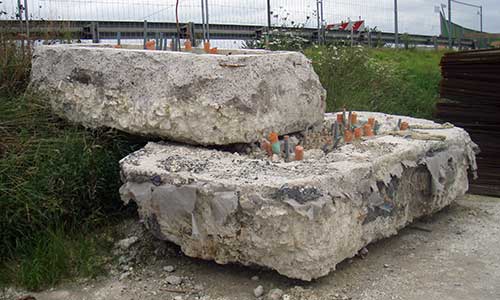
BARRETTES 150 cm x 100 cm recépés avec leurs murettes guides en un seul bloc. Chantier 59 TRITH ST LEGER, entreprise DEMATHIEU ET BARD.
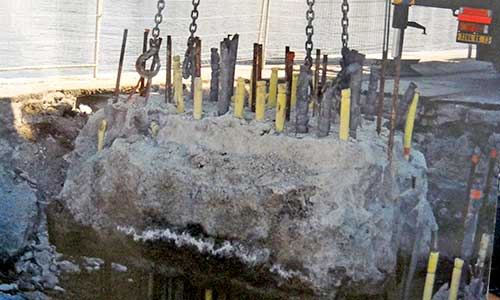
Paroi moulée largeur 80 cm chantier 13 Port de Marseille entreprise SEFI.

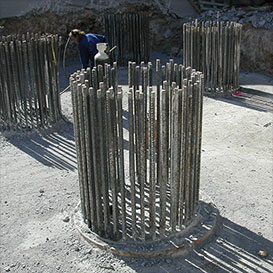
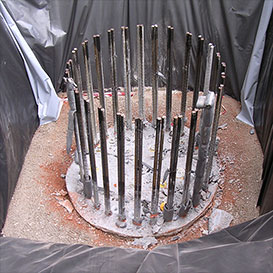
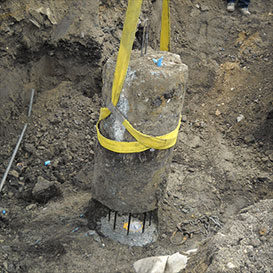
Pieu Ø1800, hauteur recépée 2m, pré-recépé sous 15m d’eau. Levage du bloc fait une fois que la tête du pieu est devenue accessible (6 mois plus tard) – GTM, pont Jacques-Chaban-Delmas, Bordeaux (33)
Pieu Ø1500, hauteur recépée 1,5m, très fortement armé. Résultat après recepage – Dragados, A23 viaduc de Teruel (Espagne)
Pieu Ø2200, hauteur recépée 1,5m, recepage à -3m sous la plateforme. Résultat en fond de fouille sans intervention humaine – Durmeyer, centrale électrique EDF à Carling (57)
Pieu Ø600, hauteur recépée 2,5m. Levage du bloc par l’engin de terrassement
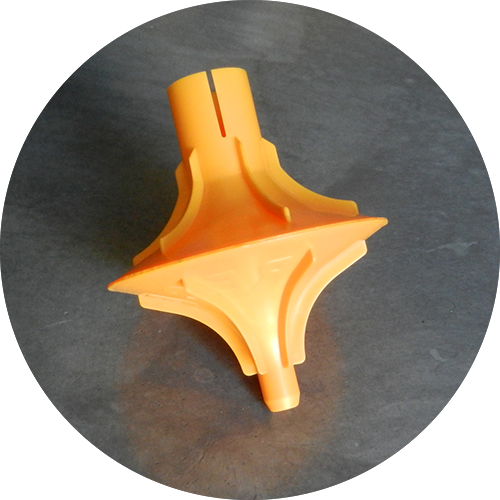
THE INVENTION IS BASED ON A SIMPLE OBSERVATION :
Concrete’s resistance under traction is 10 times lower than its resistance under compression..
The effort under traction, together with flask geometry generates a perfect horizontal cut at a precise height to the nearest centimetre, without the risk of micro fissures below the cut level.